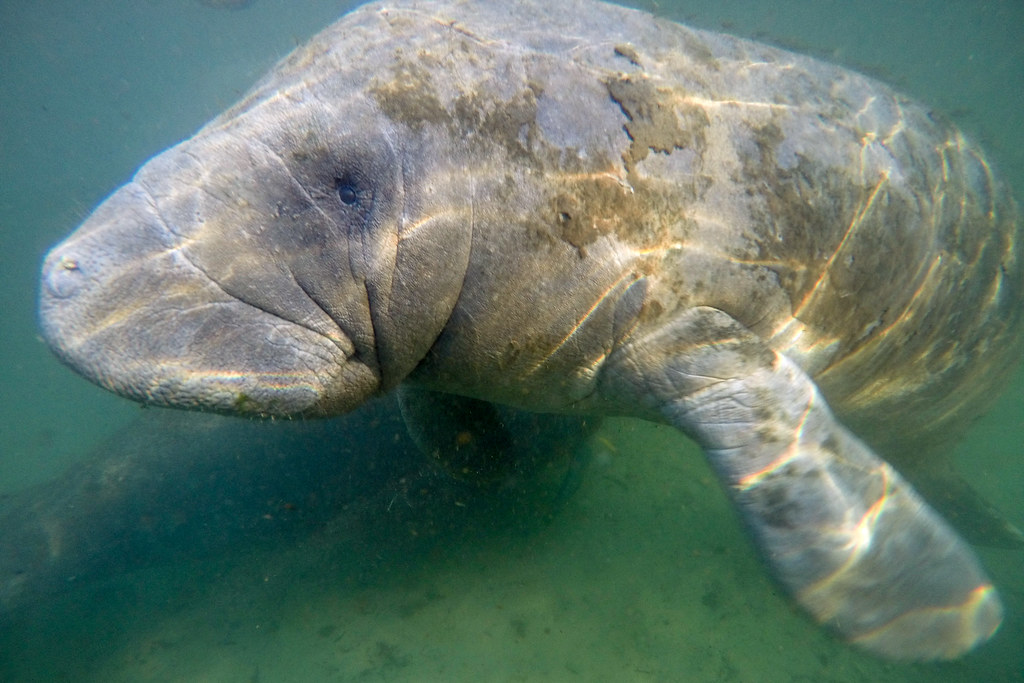Florida Manatee
Trichechus manatus latirostris
The Florida manatee is a large, gray aquatic mammal that occasionally visits the Chesapeake Bay’s shallow waters in summer.
This section shows one large critter image at a time. Use the thumbnails that follow to select a specific image to display here.

This gallery contains a grid of small thumbnails. Selecting a thumbnail will change the main image in the preceding section.
Appearance
The Florida manatee has thick, grayish skin and sparse hairs all over its body. Its front flippers have jointed bones and three to four nails at the ends, and it has a large, fan-like tail. It has small, widely set eyes and a flexible, double-lobed upper lip covered with whiskers. It grows to be nine to ten feet in length. Manatees weigh between 800 to 2,200 pounds, with females larger than males.
Feeding
The Florida manatee feeds on bay grasses such as coontail, eelgrass, hydrilla and Eurasian watermilfoil. It uses its specialized lips to grasp plants and pass food into its mouth. A manatee will eat approximately eight to ten percent of its body weight every day.
Predators
Manatees have very few natural predators. Humans are manatees’ greatest threat; manatees can become tangled in fishing nets or accidentally hit by boat propellers.
Voice
Manatees communicate by using calls that have been described as squeaks, chirps or grunts. The way the call sounds depends on the situation and the reason the manatee is communicating.
Reproduction and life cycle
Males form mating herds of up to 20 manatees, which will pursue a female that is ready to reproduce. The gestation period lasts 12 to 14 months. Females gives birth to a single calf, which is usually able to swim within an hour. Calves depend on their mothers for about two months. They drink her milk for about three weeks before starting to eat plants. Manatees usually live about eight to 11 years in the wild, but can live up to 60 years.
Did you know?
- Manatees are also known as sea cows.
- They prefer water that is 10 to 16 feet deep and often swim close to the water’s surface. When water temperatures fall below 68 degrees Fahrenheit, they will move to warmer areas. Usually live alone, but will sometimes form pairs or small groups of less than a dozen.
- Like all other mammals, manatees breathe air from the atmosphere. They can stay underwater for about 15 minutes when they are resting, but when they are active they must resurface for air every three to four minutes.
- Manatees move very slowly. They usually swim about five miles per hour, but can go faster for short periods of time.
- Scientists estimate there may only be 2,500 manatees left in the United States. They are listed as an endangered species under the federal Endangered Species Act.
- If you ever see a manatee in the Chesapeake Bay, contact the National Aquarium’s Stranded Animal Hotline to report your sighting. The aquarium monitors manatees in the Bay to help keep them safe.
Sources and additional information
- Animal Diversity Web: Trichechus manatus – University of Michigan Museum of Zoology
- Florida Manatee - Marine Mammal Commission
- Manatee – National Geographic
